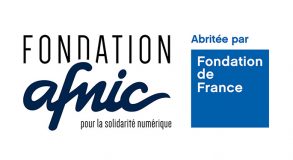Certain brand TLDs posted considerable growth in 2024, an indication that more and more businesses are looking to strengthen their digital strategies and improve the management of their online identities. Using ICANN data1, Afnic has established a ranking of brand TLDs. Several actors stand out, notably: .DVAG, .ALLFINANZ, .SCHWARZ, .AMAZON, .TOYOTA and .GOOG.
In this article, we explore the reasons behind their growth dynamics in 2024, the digital strategies that these brand TLDs are pursuing and the opportunities they are exploiting to secure and strengthen their brand image. Decoded, the results were as follows.
1 and 2: .DVAG and .ALLFINANZ: Financial advisers look to their digital identity
Deutsche Vermögensberatung AG (DVAG) is Germany’s leading financial advisory firm, working with the major banks and insurance companies for more than 40 years. It has over 8 million clients and operates through a network of 37,000 commercial agents. Allfinanz is a subsidiary of DVAG. Operating in the same sector, it places the emphasis on customised investment and savings solutions.
To control their brand image and offer a homogeneous digital experience, these firms use their own TLDs: .dvag and .allfinanz, and continue to develop their portfolio of .brand domain names.
To do so, the two firms have adopted a strategy that consists in making their advisers attractive and visible while at the same time showcasing their talents and expertise. In fact, each advisor has his or her own customised personal digital space under .dvag or .allfinanz, thus reinforcing their identification and credibility as well as clients’ trust. This approach builds on trends confirmed by our perception survey on brand TLDs carried out in September 2024 with 2,000 French Internet users: 83% of respondents considered that these TLDs favoured immediate identification of the business, the priority criterion. And 80% said they considered that a .brand address inspired confidence.
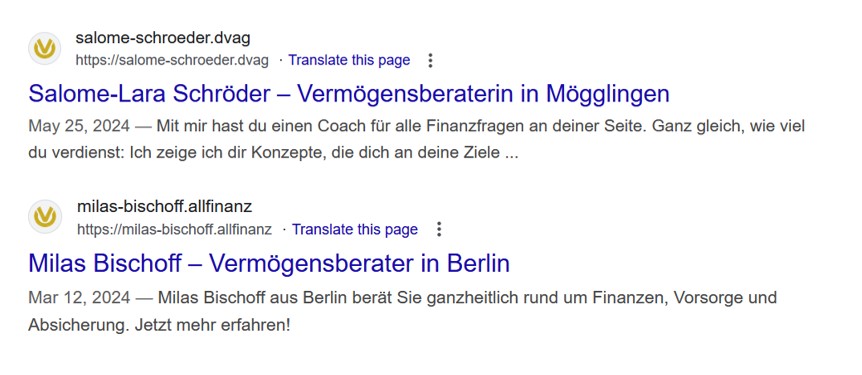
In addition, using a brand TLD forms part of a strategy of drawing users in to the main website (dvag.de), thus facilitating browsing for users while at the same time optimising access to content.
In 2024, DVAG also integrated its brand TLD into its digital communication strategy in order to boost its visibility and improve access to its resources. Thanks to personalised shortcuts under its own TLD such as fb.dvag and youtube.dvag, the firm is able to centralise its contents on the various social media platforms. This approach simplifies navigation for users and facilitates interaction with the brand. By offering direct access to content, these links contribute to a smoother, safer and more effective user experience.
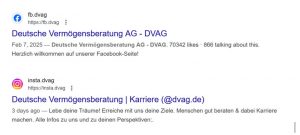
3: .SCHWARZ: Enhanced management bringing together the digital ecosystem
With more than 575,000 employees and a worldwide network of over 13,900 stores, the Schwarz group, European leader in retail distribution, known for its Lidl and Kaufland chains, reinforces its digital strategy every year with the creation of new domain names under the .schwarz TLD. Coming in third in the 2024 ranking of growing brand TLDs, the group is making best use of this TLD to optimise its online presence, structure its digital services and secure its brand identity.
One of the strongest points of the .schwarz brand TLD is its ability to give the group complete control of its brands and websites. Thanks to its personalised TLD, Schwarz manages its portfolio of domain names consistently and securely to limit the risks of cybersquatting or identity theft. This approach allows it to manage its domain names centrally, within a single digital ecosystem. Having its .schwarz TLD enables the group to bring all its activities together under one roof and to obtain a better understanding and control of its online presence.
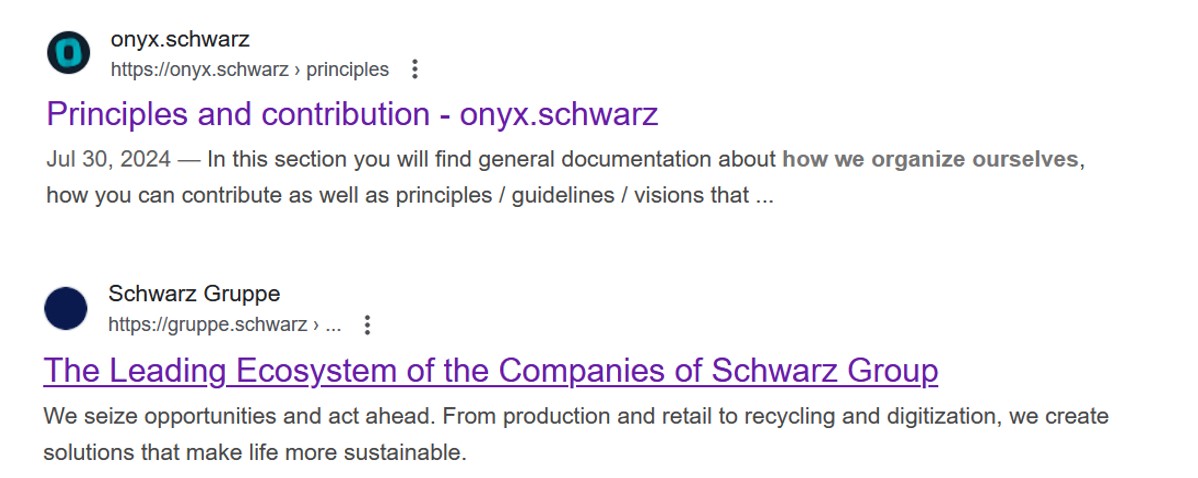
In 2024, the Schwarz group placed security and digital sovereignty at the heart of its strategy. With the development of Schwarz Digits in 2023 and STACKIT in 2024, the Schwarz group is indeed well on the way to positioning itself as a major player on the European cloud scene. Since last year, it has used the .schwarz TLD to structure its cloud services and strengthen protection of its data and services. Furthermore, Schwarz IT makes digital independence a point of honour, particularly with STACKIT, designed to compete with AWS, Azure and Google Cloud. The control that comes with a brand TLD helps to secure transactions, protect customer information and ensure the integrity of its online platforms.

4: .AMAZON: A strategy of consolidating the brand and its digital services
The .amazon brand TLD enables the e-commerce and cloud computing giant to reinforce its digital presence and consolidate its online brand identity. In 2024, Amazon added to its portfolio of domain names under its TLD, in both numbers and quality, in order to optimise the structuring of its services.
For example, with sellersinyourcommunity.amazon, a platform dedicated to sellers aimed at promoting and developing their Amazon community. And also with industrialinnovationfund.amazon, a portal dedicated to in-house recruitment and innovation. Or lastly, na.nazir.amazon, a secure space dedicated to internal authentication, improving its employees’ access to the platforms.
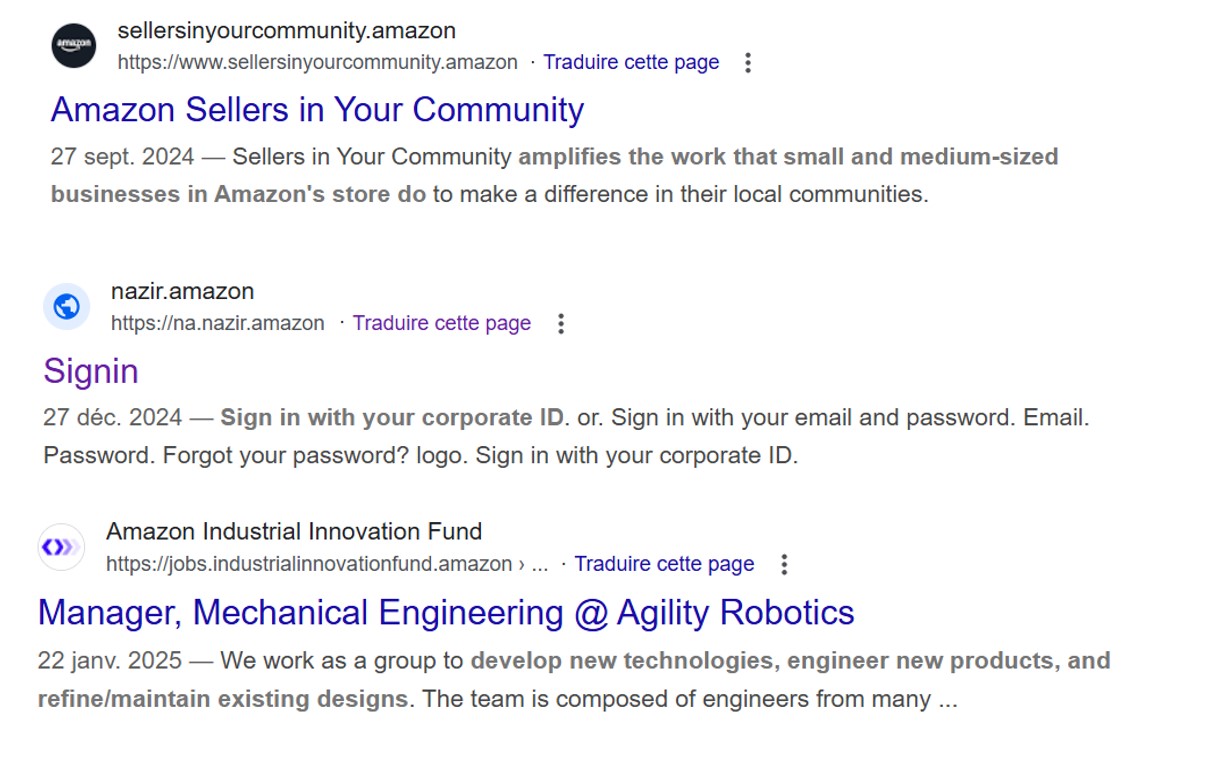
Every address ending in .amazon consequently becomes a token of authenticity and security, offering users the assurance that they are interacting with an official site. Our perception survey on brand TLDs confirms the attractiveness of this strategic approach. This e-commerce and cloud giant also applies a similar strategy with .aws (Amazon Web Services) in order to create a coherent structure for its cloud services.
Furthermore, Amazon integrates its brand TLD with its digital marketing and communication strategy, simplifying its promotional links and making its advertising campaigns easier to remember and read: for example advertising.amazon.com/-code has been replaced by ads.amazon/code.

By exploiting and creating new domain names under its .amazon brand TLD, this particular giant simplifies access to the group’s various branches and clarifies its service offering. Its goal is clear: to optimise the user experience, secure its services and centralise its digital ecosystem.
5: .TOYOTA: A market-attuned strategy aimed at structuring its ecosystem and getting the most out of it
Toyota Motor Corporation is an automotive production group composed of 15 subsidiaries and 50 manufacturing plants. The group is present in some 170 countries and has over 317,000 employees. In 2024, Toyota continued to fine-tune its digital strategy, making full use of its .toyota brand TLD to structure its online ecosystem with its customers and stakeholders. The brand consolidated a number of strategic initiatives relating to its TLD in 2024, aiming to bolster its engagement with communities and to secure and homogenise its digital presence worldwide.
One of the key elements in the strategy for using its brand TLD in 2024 was the structuring and showcasing of the specialised platforms that reflect its values and aspirations. For example, the creation of mouichido.toyota, an auction platform for second-hand Toyota cars. And also woven.toyota, a website dedicated to innovations, which centralises the advances in the fields of smart mobility, artificial intelligence and sustainable development, thus underlining Toyota’s determination to innovate beyond the automotive industry. Or biz.toyota, a platform that manages the information and procedures needed in order to make use of the group’s services. One last example is toyotatimes-sports.toyota, a topical sports website that strengthens ties between Toyota and motor sports and athletics enthusiasts.
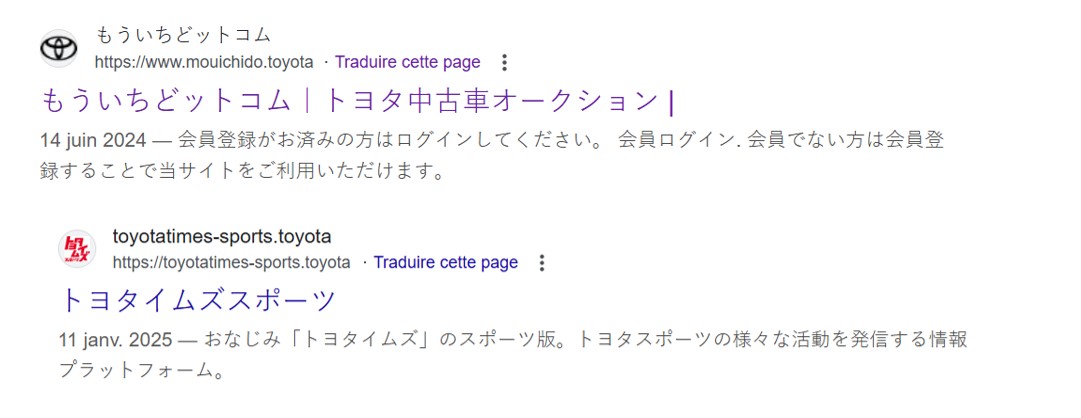
But Toyota does not confine itself to this strategy. The brand also strengthens its local and international presence by means of specific initiatives suited to their target markets. For example, the sverige.toyota website, dedicated to the Swedish market and featuring local news items and events with strategic importance for Toyota in Scandinavia. This approach is illustrated by the announcement of the extension of its partnership with Rally Sweden. By associating its online presence with local commitments, Toyota creates proximity with its target audience and consolidates its brand image in a region where motor sports are particularly popular. By adopting this digital structuring, Toyota not only homogenises its online presence but also makes astute use of its brand TLD to create value in each market.

5: .GOOG: A digital ecosystem segmentation strategy
Google adopts a different strategic approach, using its .goog and .google TLDs to structure its digital ecosystem. In contrast with the other examples above, in which the brand TLD is used to enhance public visibility, Google has earmarked the .goog TLD exclusively for specific in-house uses, while .google is used for services geared to the public.
Google pursued this strategy in 2024, introducing several new websites under the .goog TLD, each meeting a specific in-house need. This approach confirms the Google brand’s determination to centralise and master its digital ecosystem while at the same time ensuring optimal security for its users.
Google uses domain names to develop its technical and specialised services. Examples include partneradvantage.goog, which brings together resources for its trading partners, and pki.goog, dedicated to managing its infrastructure. Another example is cloud.goog, used to centralise access to Google’s cloud services and thus strengthen the organisation of its ecosystem. This approach demonstrates how Google draws on its TLD to improve the accessibility of its internal tools while at the same time ensuring the security and consistency of its digital environment.
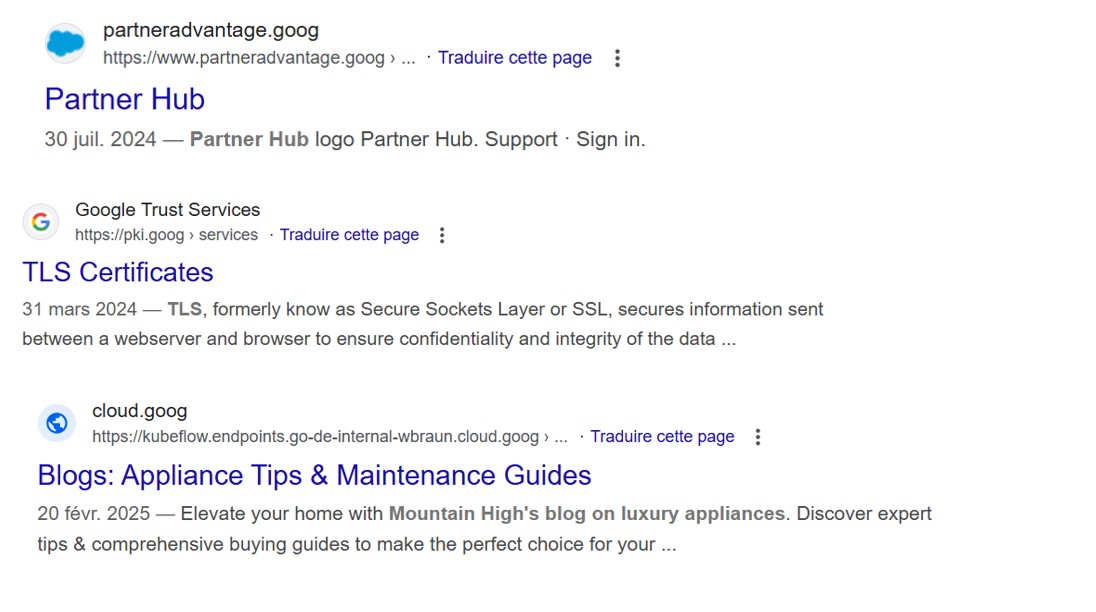
So, for example, Google uses its .goog TLD to segment its businesses without disrupting the global ecosystem of its other, outward-facing TLD, .google. This distinction allows it to organise its digital infrastructure while at the same time maintaining consistency in the management of its internal services.
CONCLUSION: A FAST-GROWING TREND
In 2024, the growth of .brand TLDs reflected businesses’ desire to take control of their digital ecosystem. By centralising their web services under a single TLD, they not only strengthen their identity but also enhance the security of their services and improve the user experience. This approach allows them to reduce the risks associated with cyber-threats by creating a more controlled environment, while at the same time simplifying user navigation.
In this context, the adoption of .brand TLDs looks set to continue to expand, in turn leading more and more businesses to envisage this solution. With the new ICANN round scheduled for mid-2026, it is now crucial for businesses to think about the opportunities that a .brand TLD could bring. If you’d like to know more about the potential of brand TLDs for your business, reach out to our teams to find out how to structure and effectively secure your online ecosystem.
1 – Ranking of so-called “closed” brand TLDs by number of create operations in 2024: DVAG, ALLFINANZ, SCHWARZ, AMAZON, TOYOTA, GOOG. – Source ICANN.

